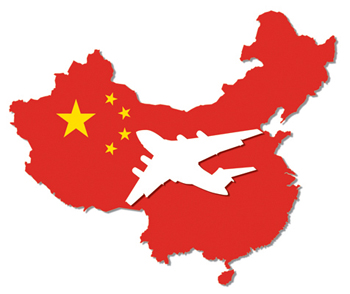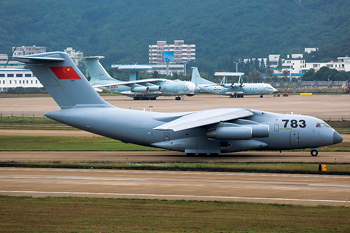INDIAN ARMED FORCES CHIEFS ON OUR RELENTLESS AND FOCUSED PUBLISHING EFFORTS

The insightful articles, inspiring narrations and analytical perspectives presented by the Editorial Team, establish an alluring connect with the reader. My compliments and best wishes to SP Guide Publications.

"Over the past 60 years, the growth of SP Guide Publications has mirrored the rising stature of Indian Navy. Its well-researched and informative magazines on Defence and Aerospace sector have served to shape an educated opinion of our military personnel, policy makers and the public alike. I wish SP's Publication team continued success, fair winds and following seas in all future endeavour!"

Since, its inception in 1964, SP Guide Publications has consistently demonstrated commitment to high-quality journalism in the aerospace and defence sectors, earning a well-deserved reputation as Asia's largest media house in this domain. I wish SP Guide Publications continued success in its pursuit of excellence.
China’s Strategic Airlift Capability
The traumatic reality for the nation is that the Indian aerospace industry has been left far behind in the race with its Chinese counterpart and the way things are moving, there appears to be practically no hope of catching up!
 |
By Air Marshal B.K. Pandey (Retd) Former Air Officer Commanding-in-Chief of Training Command, IAF |

On July 06 this year, the People's Liberation Army Air Force (PLAAF) of China formally inducted into service the Xian Y-20, a heavy-lift military transport aircraft manufactured by the Xian Aircraft Corporation (XAC). The induction ceremony was held in the South Western city of Chengdu. The Y-20 is the first indigenously produced large military transport aircraft with strategic airlift capability to enter service with the PLAAF. This represents a major step forward in the nation’s effort to acquire the wherewithal for the projection of military power globally. It is also a feather in the cap of the aerospace industry of China that with the induction of the Y-20 into the PLAAF, has indeed crossed a major milestone!

Work on the development of the Y-20 commenced sometime in the 1990s with assistance from Russian and Ukrainian aeronautical engineers who were reported to be involved as ‘Design Consultants’. However the project was formally launched by the Chinese original equipment manufacturer XAC only in 2006. It is understood that the main planes or the wings for this aircraft were developed by Ukrainian Antonov Design Bureau. The maiden flight of the first prototype was successfully completed on January 26, 2013, seven years after the official launch of the project. The similarity in the airframe design of the Y-20 with that of the Boeing C-17 Globemaster III and the Russian Ilyushin IL-76, was clearly visible when for the first time, the aircraft was put on display at the Zhuhai Airshow in July 2014. Series production of the Y-20 began thereafter in the following year i.e. in 2015. As per a US defence industry analyst, the Initial Operational Clearance for this strategic airlift aircraft is expected in 2017 and the Final Operational Clearance a few years later.
The growing military capability of China will have an immediate impact on the politico-military dynamics of the Asia-Pacific region.
With a maximum all-up weight of 200 tonnes, the Y-20 is currently powered by four Russian D-30KP2 turbofan engines of 1960s vintage. It is reported that in the future, the Russian power plants will be replaced by the more modern WS-20 turbofan engine that is being developed by the Chinese aerospace industry. The airframe has been made largely with indigenously produced composite materials that conform to international standards. This has helped in cutting down the overall weight of the aircraft. Incidentally, this is the first cargo aircraft to use 3-D printing technology which has definitely helped to speed up its development as well as to lower the overall cost of production.
The Y-20 has a payload capacity of around 66 tonnes though some reports mention 73 tonnes. This payload capacity places the aircraft in a class between the larger C-17 Globemaster III that has a payload capacity of 77 tonnes and the smaller Ilyushin Il-76 that is capable of lifting 43 tonnes. The Y-20 has better performance as compared with the Il-76 which is also in service with the PLAAF. With maximum payload, the Y-20 can fly up to a distance of 4500 km and with reduced payload of 40 tonnes, its range increases to 7800 km. With a wide and large size fuselage as well as a rear loading ramp, the aircraft can load up tanks, armoured personnel carriers as well as heavy support vehicles. Endowed with short takeoff and landing capability, the Y-20 can operate from smaller runways located even in the mountainous regions. With the WS-20 power plants, the performance is expected to be even better. It is understood that the aircraft has not as yet been provided with the capability to receive fuel or refuel other aircraft in flight. The Y-20 would replace the existing fleet of the ageing Y-8 turboprop military transport aircraft which was built by the Chinese aerospace industry as an unlicensed version of the Russian An-12 four engine turboprop aircraft .
With the successful induction of the Y-20 into the PLAAF, China has became the fourth nation in the world after the United States, Russia and Ukraine to develop a 200-tonne military transport aircraft powered by jet engines. The initial requirement of strategic lift aircraft projected in 2014 by the PLAAF was for 400 platforms. As of January 2016, around eight Y-20 aircraft have been built of which two have already been delivered to the PLAAF in June this year. However, as reported by the Chinese media in early June 2016, the requirement for the aircraft has now been revised upwards to 1000 platforms. This is a clear indication of the substantial increase in the requirement of China’s strategic airlift capability which would be in conformity with her rising status as a world power.
In the decade of the 1980s, the PLAAF was generally regarded as a force equipped with aerial platforms of antiquated technology, However, particularly over the last two decades, the PLAAF has undergone an impressive transformation in tandem with the nation’s rising status as a power in the world to reckon with. This transformation has been achieved through a well crafted and aggressive modernisation drive by the political and military leadership of the nation. As a result of this dedicated effort and motivation of the national leadership, today, the PLAAF is undoubtedly one of the leading air forces in the world.
China has been driven by aspirations to emerge as a superpower and thereby to not only dominate the Asia-Pacific region; but more importantly, to challenge the supremacy of the US. To achieve its long term military and strategic objectives, China undoubtedly needs an air force that is not only equipped with lethal assets by way of the latest generation combat aircraft and force multipliers, but also has the capability to provide the nation with the strategic reach and the capability of swift response necessary to protect its growing national interests that extend well beyond its borders, in fact globally. The Chinese aerospace industry has been forging ahead and is now engaged in the development of fifth generation aircraft such as the J-31 with stealth characteristics. With the induction of the 1000 Y-20 aircraft in the PLAAF, the Chinese government will have the capability to quickly transport large combat forces to any part of the world in the pursuit of its national security interests. China will also be able to effectively undertake disaster relief operations with relative ease even in distant lands.
The growing military capability of China will have an immediate impact on the politico-military dynamics of the Asia-Pacific region. Given the aggressive moves by China in the South China Sea in the recent past, its enhanced strategic airlift capability would be of serious concern to the US and her allies. The implication for India is that the enhanced strategic airlift capability of the PLAAF will only strengthen the Sino-Pak nexus as well as add a new dimension to the threat to the security of the nation from China. But perhaps the more traumatic reality for the nation is that the Indian aerospace industry has been left far behind in the race with its Chinese counterpart and the way things are moving, there appears to be practically no hope of catching up!





